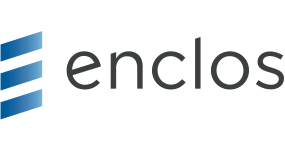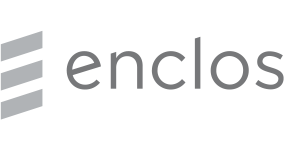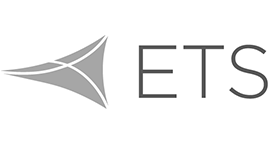There are several variables that can be adjusted to optimize the visible light on a Tensile Fabric Façade, also known as Facade Screening Systems. We can look at combinations of variables to determine how to dial in the best lighting for different applications. Here are some of the variables at play…
- Direction of light (backlight or front light)
- Openness of fabric mesh
- Color of fabric mesh
- Translucency of fabric mesh
One of the most important variables is the placement of the light source. On a parking garage screen, if there is only backlighting from inside the garage and no lighting from outside the garage, then the façade may become a silhouette allowing visibility inside the garage. Here’s an example of a parking garage at the Helms Bakery in Los Angeles with daylighting in one photo and again with only interior lighting.

At night, without exterior lighting, the façade practically disappears as if it isn’t even there. To create some visibility on the façade, external lighting would need to be placed outside the garage to create reflected light off the outside face of the fabric.
In San Diego, at the One Paseo parking garage, there are several floodlights cantilevered at the base of each installation to provide reflective light to preserve the image at night.
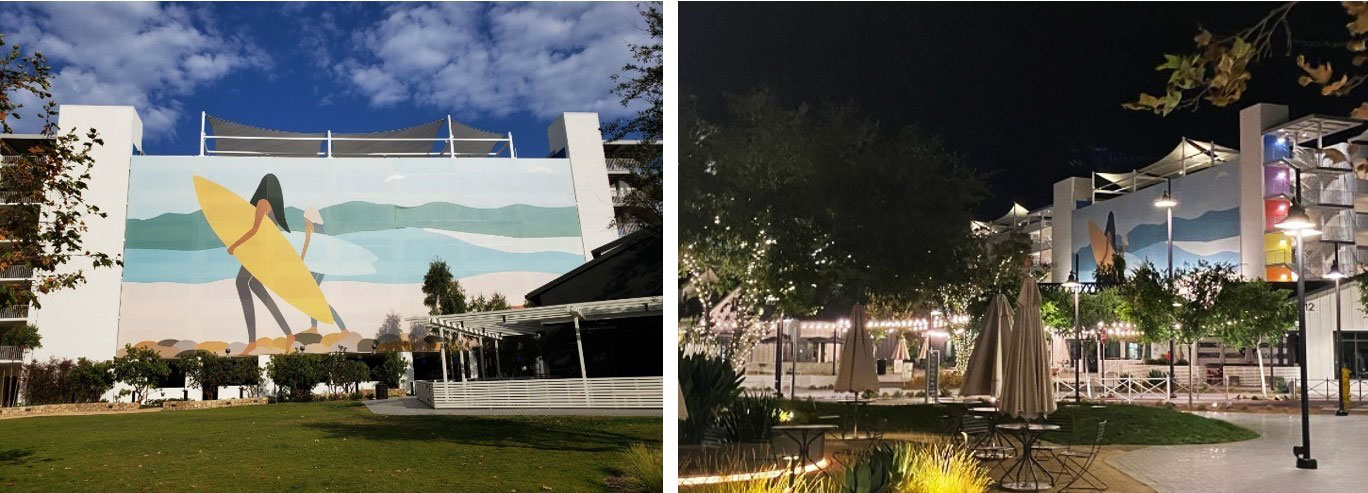
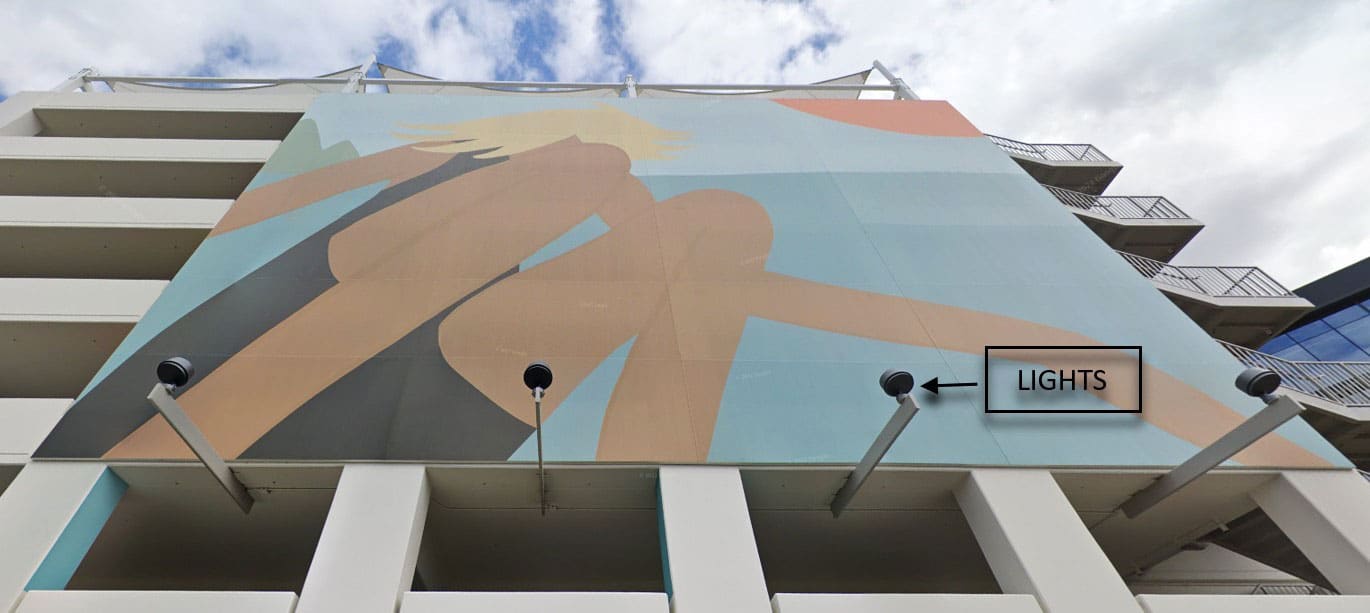
Porosity, or “openness factor”, is another variable that can be controlled by selecting the fabric that best fits the goals of the project. Sometimes a solid fabric is selected. This provides the best resolution for the graphics and doesn’t allow internal garage lighting to show through the fabric. Here’s an example of a printed graphic on a solid fabric with no porosity.

This solution works well for smaller graphics on a large garage. As the coverage of the façade screening increases, it is necessary to run calculations to verify that adequate ventilation is maintained and meets code. The ventilation can be increased by selecting a fabric with more porosity. There are many fabrics to choose from with openness factors ranging from 4%, 14%, 20%, 28%, 45%, 50% and even 75%. The higher the openness factors, the better the ventilation will be. Consequently, the graphics will appear washed out as the openness increases. With 50% open and above, the printed images may appear rather ghostly. Here’s an image printed on 28% open fabric shown in daylight, backlight, and looking out from inside.

The visibility through a fabric can also depend on the color of the fabric screening. Most screen doors are made with a dark-colored material. This reduces the glare of the mesh and increases visibility beyond the material. Here’s an example of the visibility through a dark mesh and a white mesh respectively.
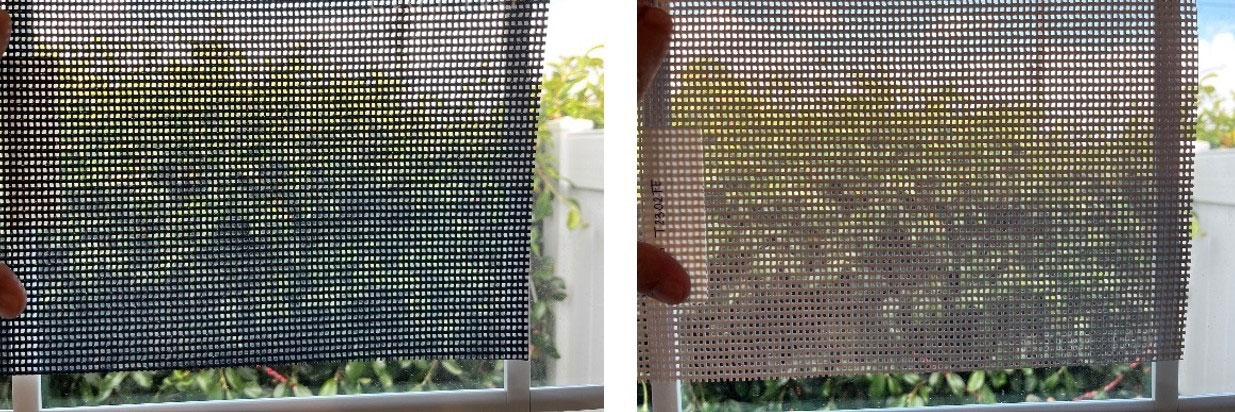
The translucency of the fabric can also affect the glow of the façade screening. Most printed fabrics have a light transmission of less than 1%. Some of the white fabrics can transmit 10%, 16%, and even up to 38% of diffused visible light. Here are some images of a white PTFE mesh with 20% openness and light transmission of 37%. The fabric has the ability to mask the inside of the garage during the day yet provide a warm glow when lit up at night.

With all of these fabric and lighting variables, there are dozens of possible permutations for fabric façades. Reach out to a design-build specialist for samples and/or more information.
